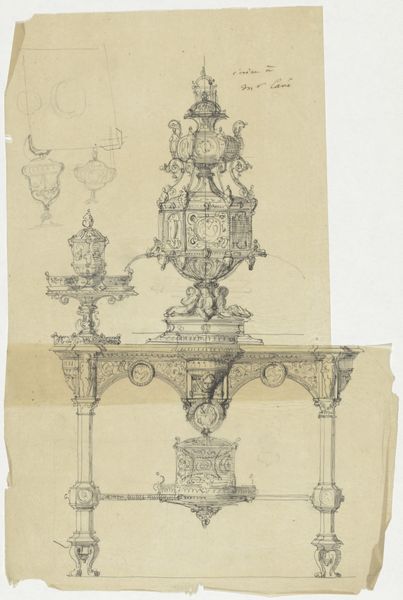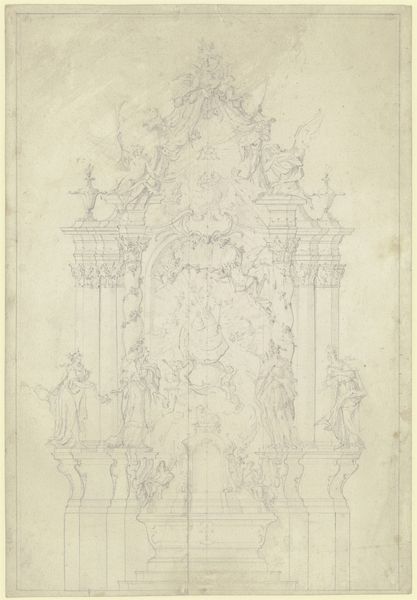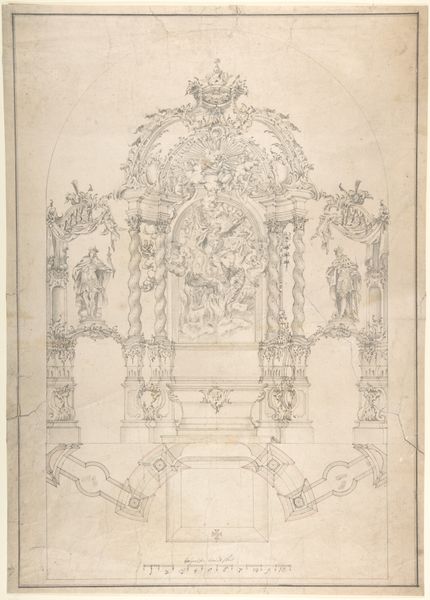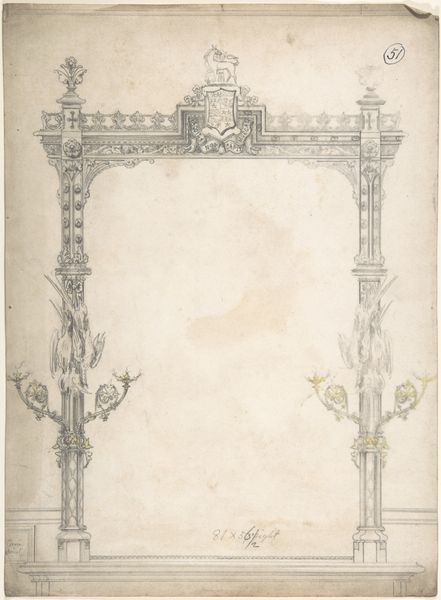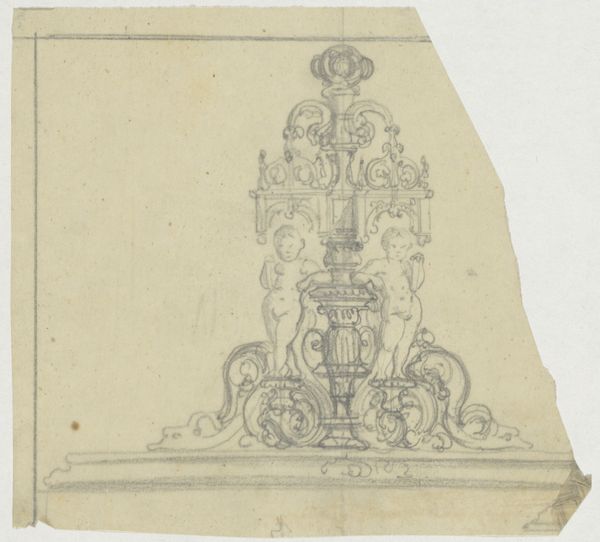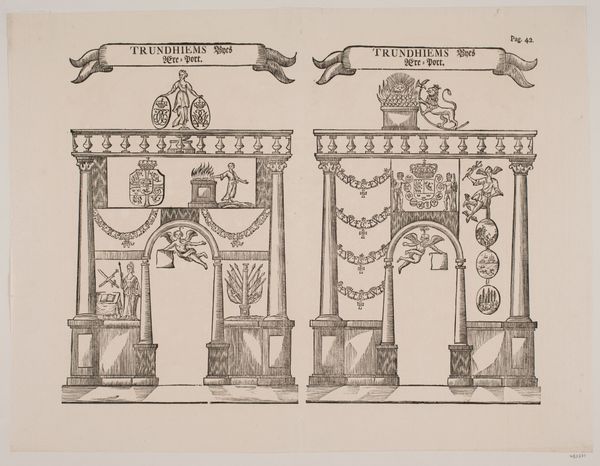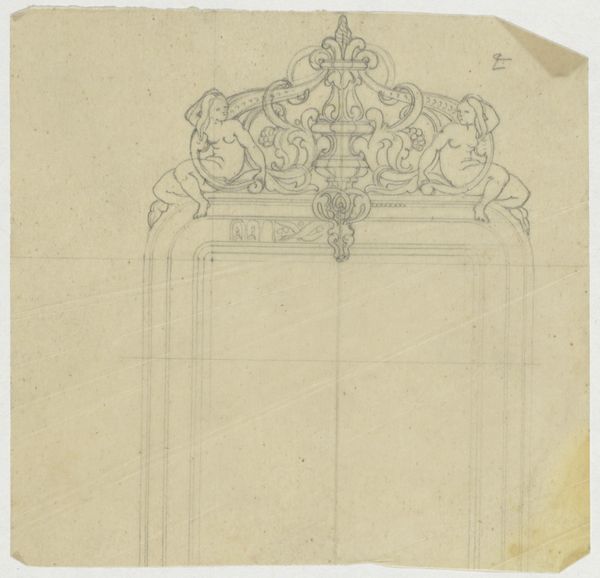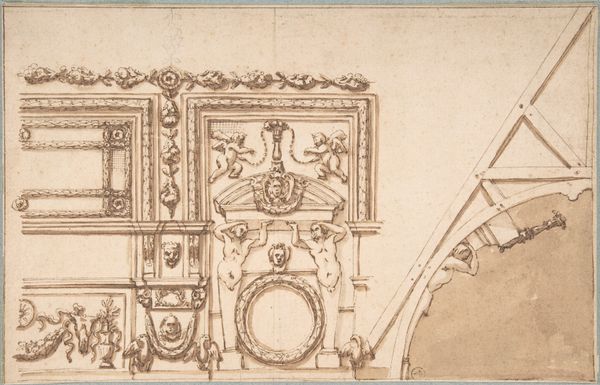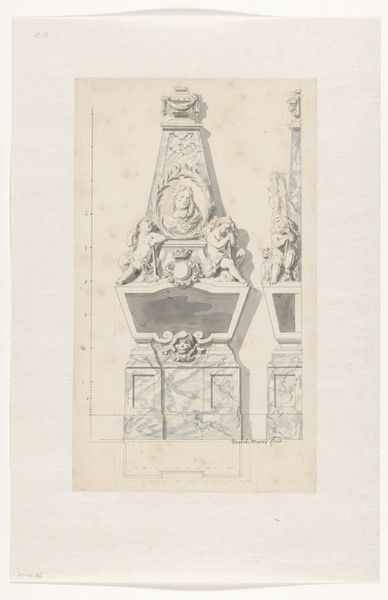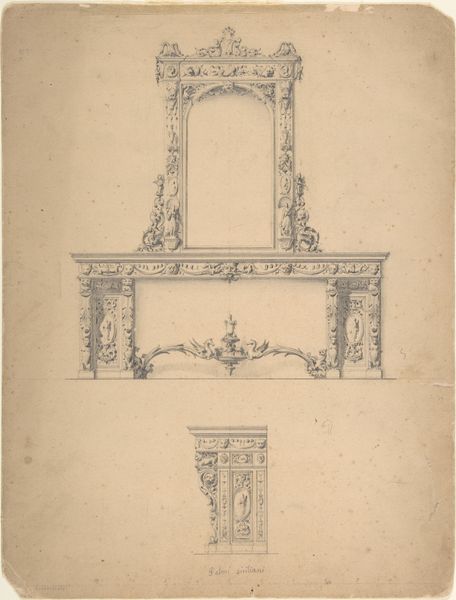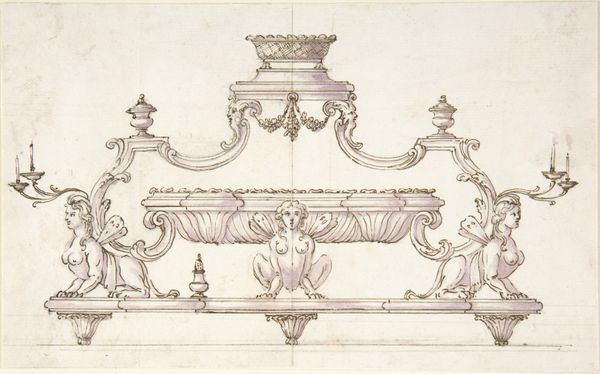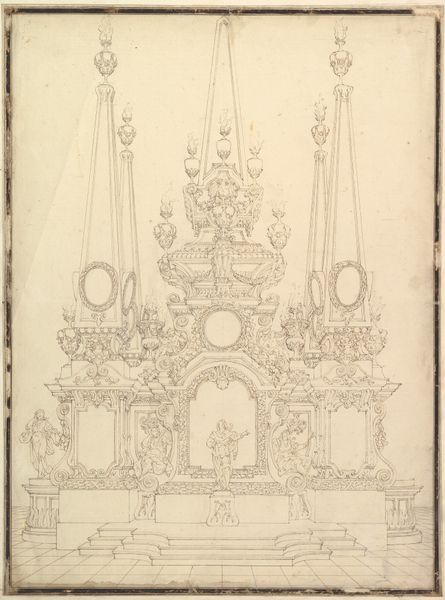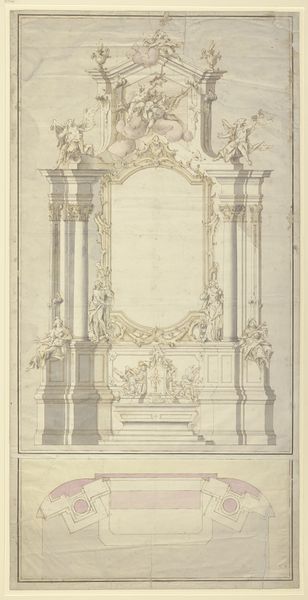
Desseins a Plusieurs Usages Inventés par M. B. Toro 1718
0:00
0:00
drawing, print, engraving, architecture
#
drawing
#
baroque
# print
#
geometric
#
decorative-art
#
engraving
#
architecture
Dimensions: Plate: 7 3/8 × 11 1/16 in. (18.8 × 28.1 cm) Sheet: 15 5/8 × 10 7/8 in. (39.7 × 27.7 cm)
Copyright: Public Domain
Jean Bernard Toro designed this print, with its playful uses, sometime around the turn of the 18th century. It’s a celebration of ornament, overflowing with symbolic meanings and reflecting the tastes of the period. Note the recurring presence of putti, or cherubic figures. They are symbols of innocence and divine love. We see them, for example, as musicians on either side of the composition. These figures have their roots in classical antiquity, where they represented Eros or Cupid, the god of love. As Christianity spread, they transformed into angels, populating Renaissance paintings, and were used to convey a sense of heavenly beauty and divine presence. The motif of a grotesque mask at the base also strikes me. It's a relic of the Renaissance's rediscovery of antiquity, often meant to ward off evil spirits and to connect with primordial forces. Here, it echoes an emotional intensity—a reminder of the irrational and sometimes frightening aspects of human nature. Consider how these symbols carry emotional and cultural weight. They echo through time, transforming, yet maintaining an emotional resonance that speaks to our collective memory.
Comments
No comments
Be the first to comment and join the conversation on the ultimate creative platform.

